The importance of walking has archetypal values, taking on practical, liturgical and spiritual functions in numerous religions, and Catholicism is no exception. It is certainly not uncommon for people, most of whom became saints, to have based their religious practice on pilgrimage, continually walking with the dual purpose of embarking on a path that would, on the one hand, bring them closer to God and, on the other, enable them to spread his word as a work of evangelization. Even today, their itineraries are beaten by numerous people, both for religious and secular pilgrimage purposes. Undoubtedly, the path of St. Francis is among the most interesting: in every place where the patron saint of Italy stopped, convents, churches, chapels, shrines, and crosses have sprouted up, making it still one of the most fascinating itineraries to walk.
In recent years there have been numerous initiatives that have arisen to enhance this heritage and systematize it into a route, and the stretch that winds through Tuscany, among splendid monuments and enchanting landscapes is among the most significant, especially the Valtiberina in the province of Arezzo maintains the memory of numerous and splendid places linked to the life of St. Francis, between spirituality and art.
Although it stands outside the border of the Valtiberina, albeit only for a few kilometers, Chiusi della Verna in Casentino is home to one of the most important places linked to the history of St. Francis, from which in fact then radiate all the variants of the path dedicated to the Saint. Here “in the raw rock between Tevero and Arno/from Christ took the last seal/which his limbs two years bore,” Dante wrote, alluding to the fact that on the mountain the Seraphic of Assisi received the stigmata. Francis received this “most divine mount” as a gift from a believer in 1213, and he wanted a first little church built there, which at the time was supposed to have the same measurements as Assisi’s Porziuncola, but over time was greatly enlarged by the convent and other holy places.
Today it can be reached by car or by walking the same hauntingly beautiful path between rock and forest that Francis had traveled. “No other mountain is more holy in all the world,” one reads on the arch that gives access to the complex, which consists of the Chapel of St. Mary, the first original church, the Basilica Maggiore and the Chapel of the Stigmata, preceded by a corridor where in eighteen panels episodes from the life of the Poverello of Assisi were illustrated by Baccio Maria Bacci. The shrine, which also contains numerous relics related to the saint, in addition to dominating a landscape that stretches to infinity, is embellished with superb ceramic works by Andrea della Robbia and his workshop that illuminate the sober architecture.
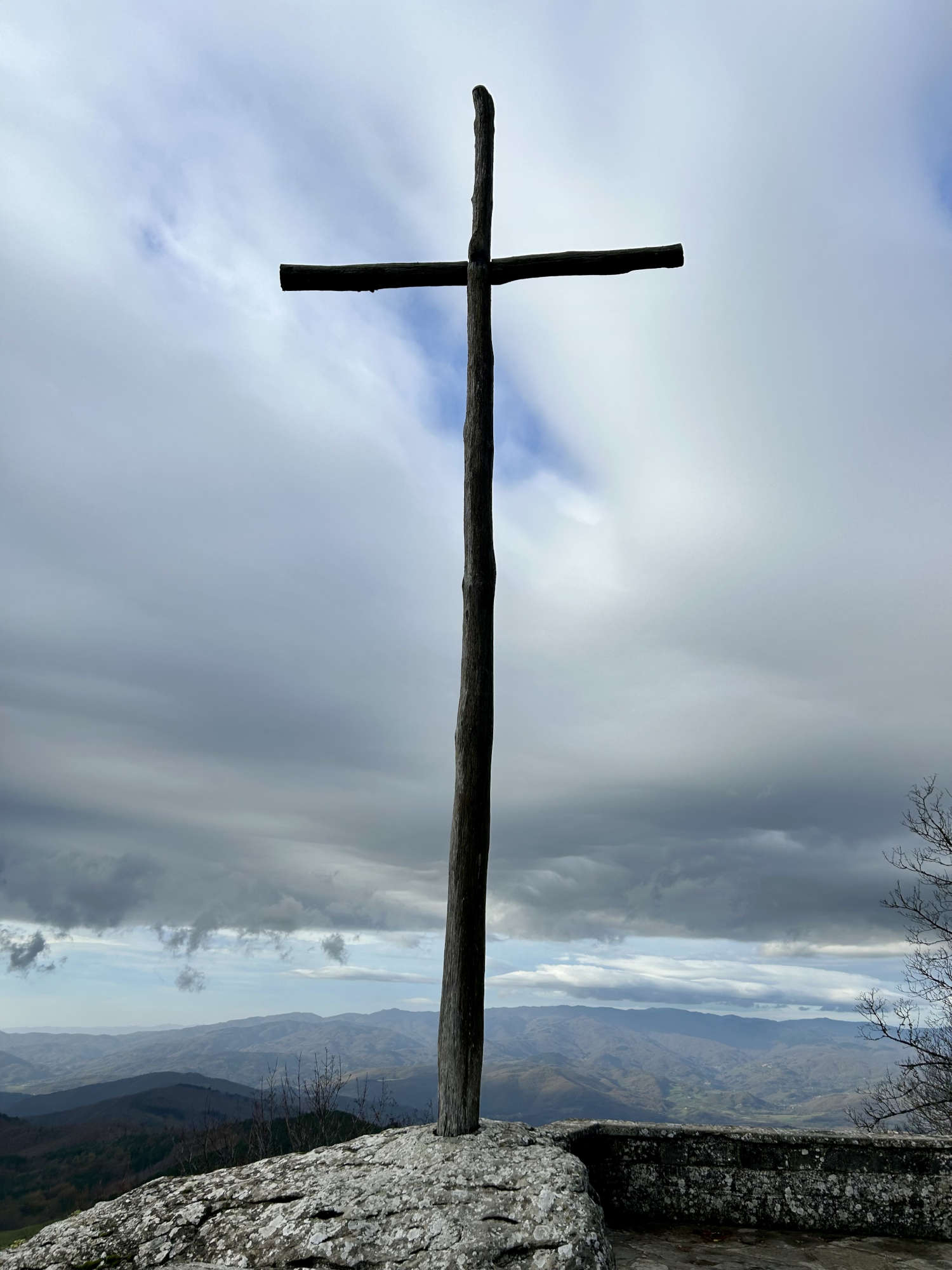
 The Sanctuary of La Verna in Chiusi
The Sanctuary of La Verna in Chiusi The Sanctuary of La Verna at Chiusi
The Sanctuary of La Verna at Chiusi
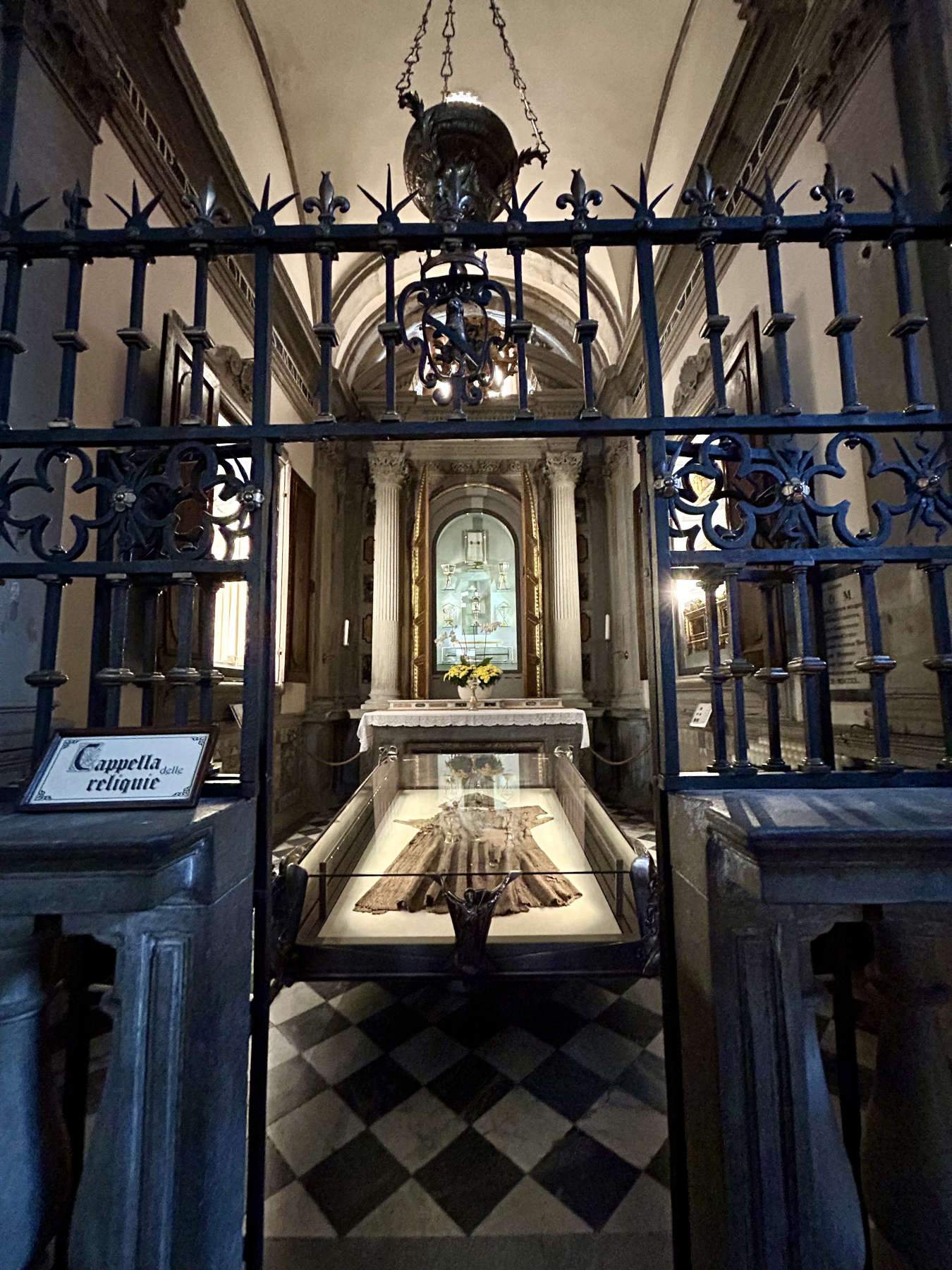
Returning to the Valtiberina, one of the first places of Francis that one encounters is near Caprese Michelangelo, the town that links its name to one of the most important artists in history, where the Casella Hermitage is located, where an ancient tradition has it that the saint stopped on his return journey to Assisi to officiate a ritual and to gaze one last time at the mountain of La Verna, aware that he would never see it again: “Farewell, mount of God, holy mount, mons coagulatus, mons pinguis, mons in quo beneplacitum est Deo habitare! Farewell mount Alvernia; God the Father, God the Son, God the Holy Spirit bless you! Stay in peace, that we may never see each other again.”
This small stone chapel, which maintains a humble and humble appearance, was built on the spot where Francis had a cross planted, in a place surrounded by silence and breathtaking scenery.
Another striking building is theHermitage of Cerbaiolo, not far from Pieve Santo Stefano and, according to a popular saying, “he who has seen Verna and not Cerbaiolo has seen the mother and not the son.” In reality, this holy place is much older than the Verna Sanctuary, as it was built in the 8th century, and is attested as one of the oldest Benedictine monasteries in Tuscany. It sits atop a cliff of limestone rocks, and this is where Francis was brought in 1216, during his third passage through Pieve Santo Stefano, when it was donated to him. St. Anthony of Padua also found himself stopping at this place, finishing the composition of his Sermons there, and for this reason this stage is also included in the path dedicated to him. Giosuè Carducci was also a guest in the monastery, who recalls him in a poem written in 1867: “E tu che al cielo, Cerbaiol, riguardi / Descendendo dai balzi d’Appennin, / Come gigante che svegliato tardi / S’affretta in caccia e interroga il mattin.” The hermitage, severely damaged in World War II, was later rebuilt: the complex, which belonged to the Franciscans, consists of a graceful cloister of 17th-century origin, a polygonal-plan church with some Renaissance elements and a convent.
Not far away, nestled in the bush and built on a slope, is the 18th-century Chapel of St. Anthony, where the floor is built on bare rock, and the saint’s bed is said to be preserved here. And further still, a striking Christ carved in the stone of the mountain, the legacy of some anonymous pilgrim.
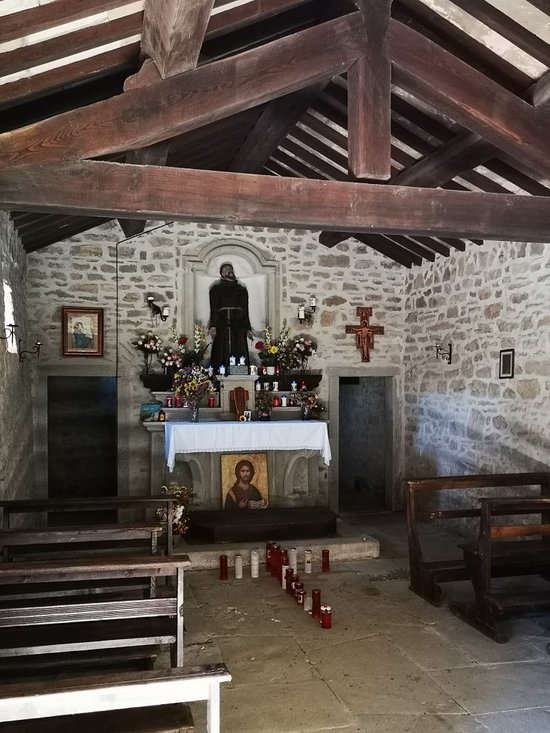 The
The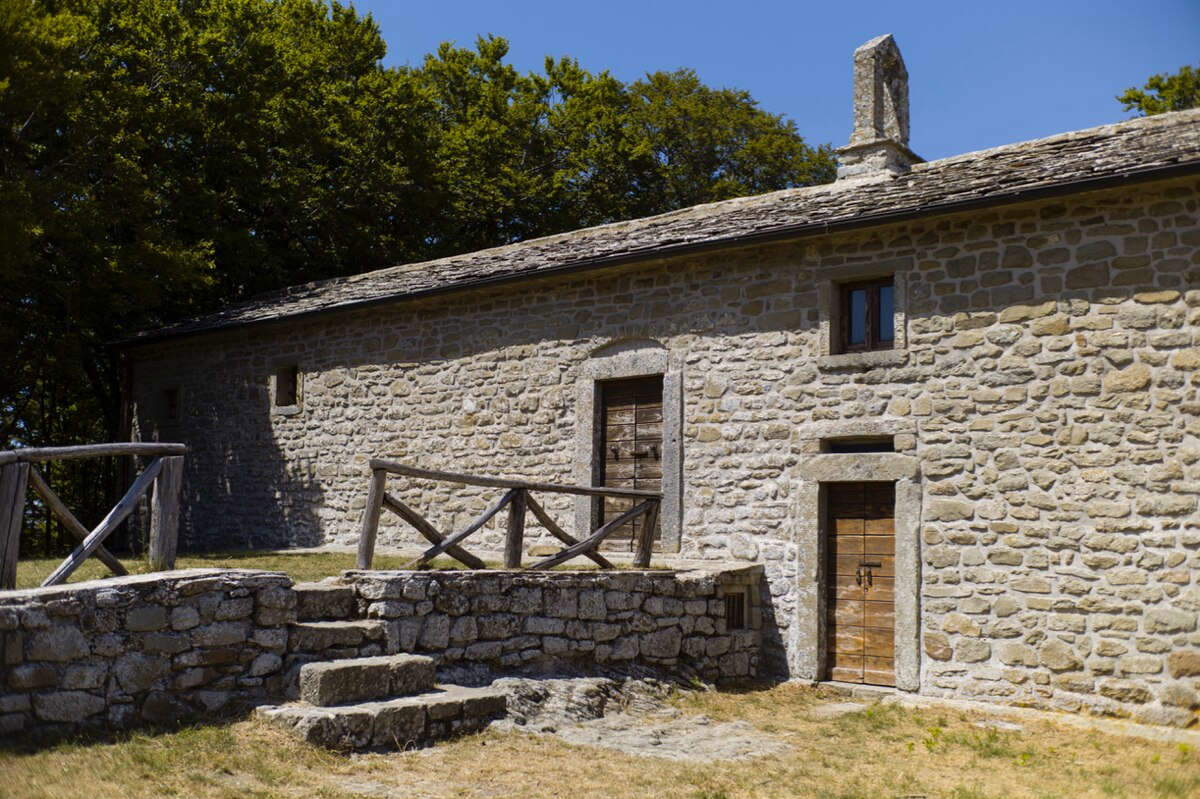
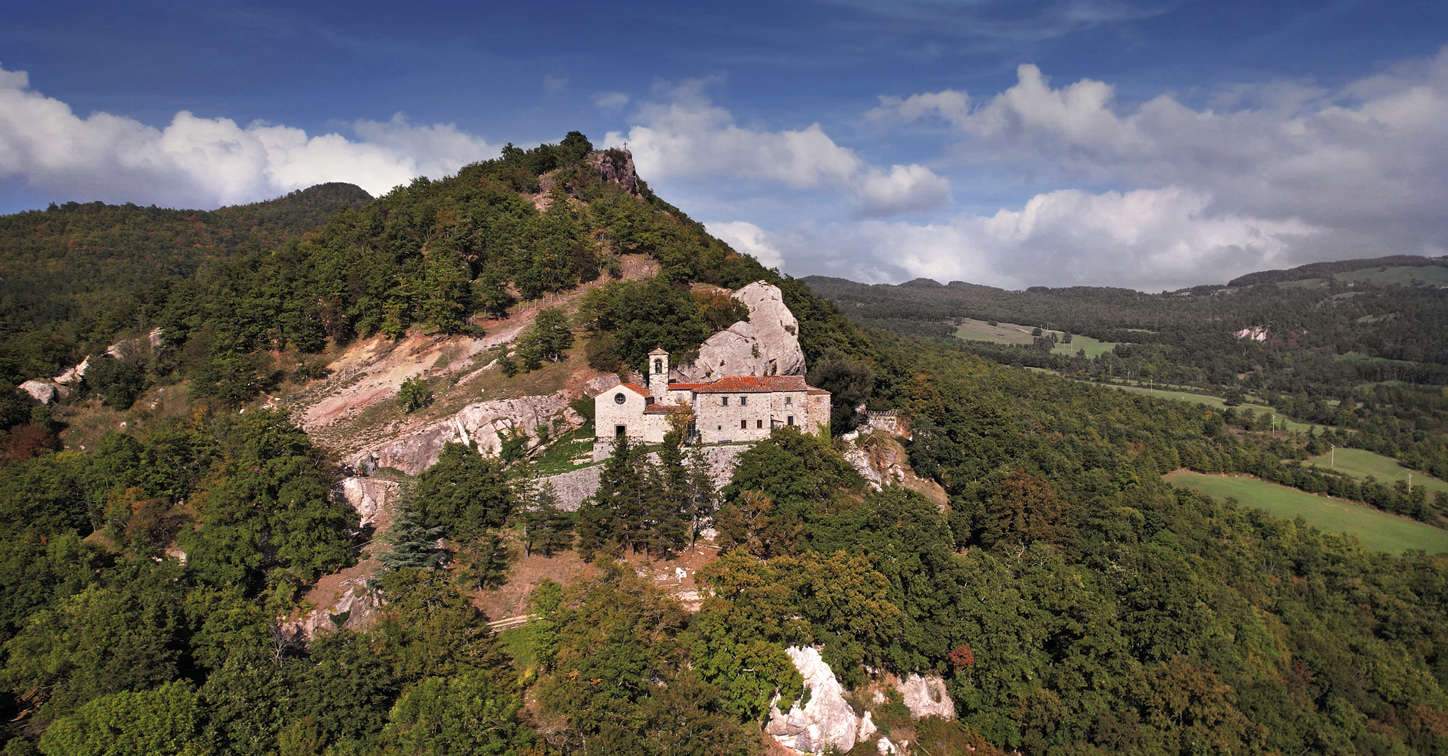

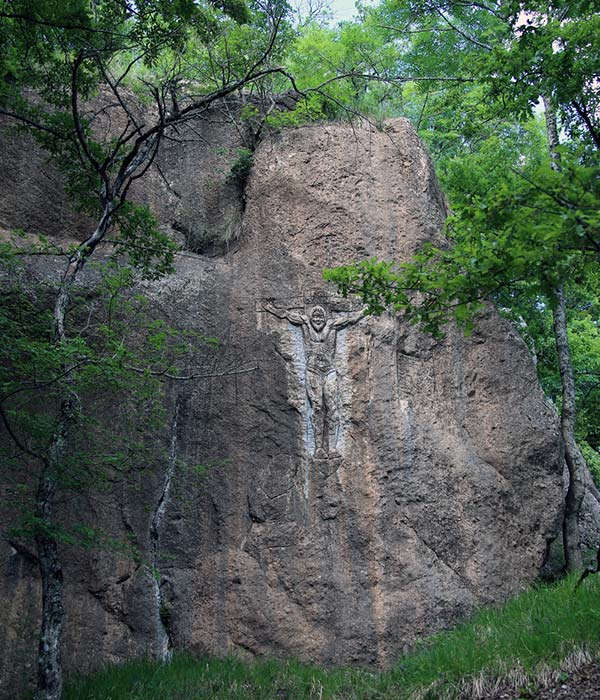
Another Franciscan hermitage can be boasted of in the Valtiberina, and it is that of Montecasale, in the territory of Sansepolcro, a town that also saw Francis preach on the steps of the ancient cathedral. The hermitage, lost in the wild and uncorrupted nature, is a sanctuary built in the 1200s on a pre-existing Camaldolese hermitage with the function of a hospital, itself erected over early medieval fortifications. It was donated by the bishop of Città di Castello to St. Francis, and here he performed the "Conversion of the Thieves," narrated in the XXVI chapter of the Fioretti. This episode in the saint’s hagiography tells how he succeeded in converting brigands, who had long been troubling the local religious, hiding in the bush to lay ambushes and procure food. Francis, despite contrary opinions wanted to feed them and then ask them why they continued to lead a life of hardship that was corrupting their work: “Better is to serve the Lord, and He in this life will provide you with what you need and in the end will save your souls,” gaining their conversion and making them embrace the rules of his order; the skull of two of them is preserved in the hermitage.
The complex that embraces the humility of the Seraphic of Assisi is made of stone and wood, and maintains the layout of the oldest Franciscan convents, marked by a central cloister punctuated by pillars and lintels, around which modest buildings with monastic purposes are developed. Inside the church is an interesting sculpture of a wooden Madonna whose polychromy is preserved, set in an altar with scrolls carved in wood. Later an oratory was built in place of the cell where St. Francis used to stay, with three reliquaries and the rock that was the bed of the Poor Man of Assisi, as well as a crucifix of 15th-century origin. In addition, the cells where St. Anthony and St. Bonaventure stayed are preserved there.


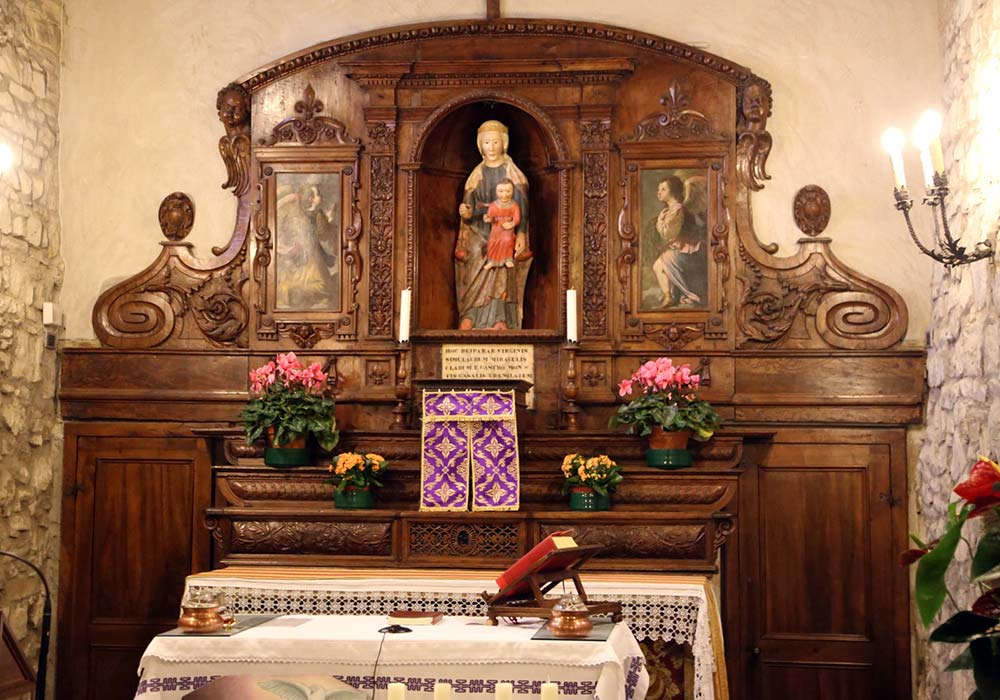
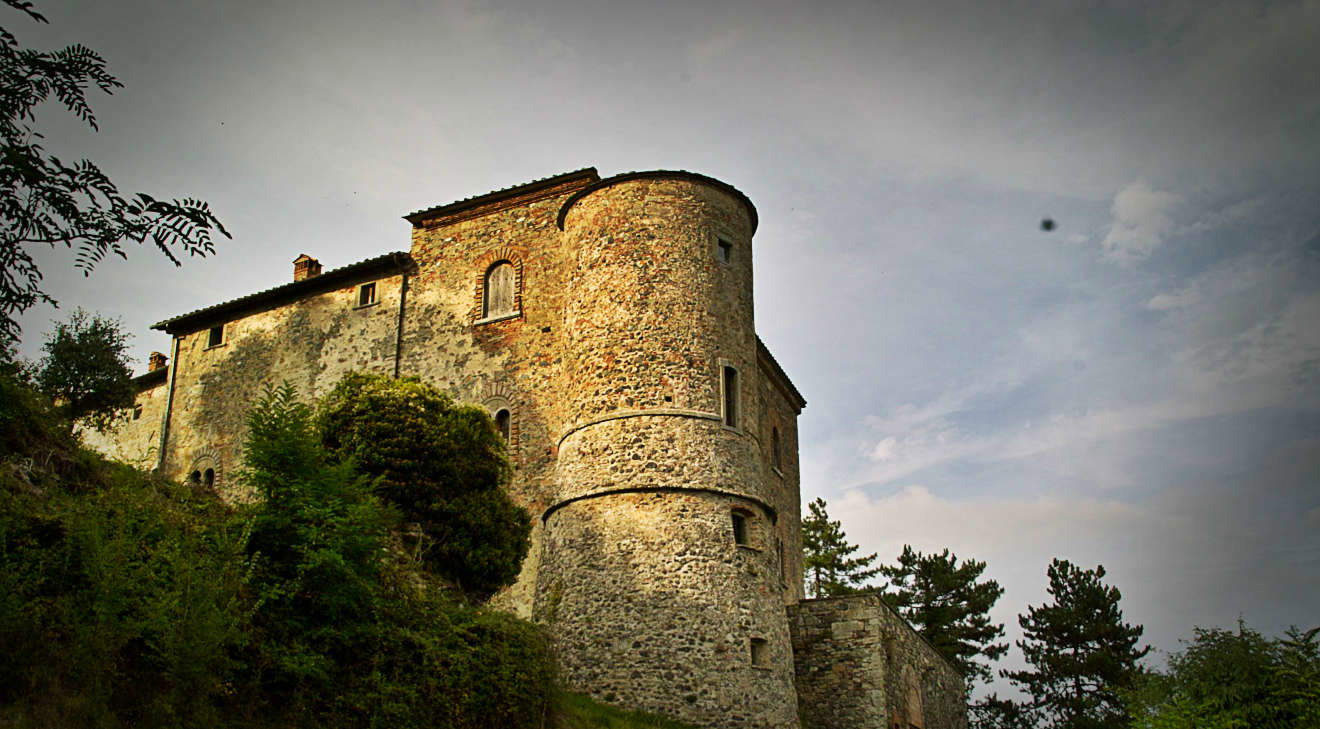
Finally, near Anghiari, where there is already the Church of the Cross, which according to tradition was built where Francis had planted a cross, is the Castle of Montauto. It stands on top of Mount Acuto, and its origins are traced back to before the year 1000, although it has since been remodeled several times. Its iconic cylindrical tower, attributed to Francesco di Giorgio Martini, is grafted onto the palace known as the Armigeri.
The entire structure suffered deep damage during the last World War, only to be restored. In this place St. Francis was several times the guest of his devoted friend Count Alberto de’ Barbolani, who happily lent himself to provide his hospitality whenever the Seraphic was passing through to or from La Verna. In 1224, Francis foreshadowing his near death, announced to his friend that that would be his last visit to the castle, and agreed to leave him as a gift his worn-out habit mended with broom stems, receiving a new one in return. The family kept the relic for centuries, kept in a chapel, until it was taken away in 1503 by the victorious Florentines over Arezzo, who kept it in the Church of All Saints until not too many years ago, when it found its final resting place in the early 2000s in the Sanctuary of La Verna.
Not far away, there is also the Franciscan convent known as the Cenacolo di Montauto, of 16th-century form, which was founded by Federico Barbolani, as evidence of the family’s devotion to the Saint of Assisi. The convent’s refectory is decorated with a cycle of frescoes depicting stories from the life of St. Francis, and a small patch of the famous habit is preserved inside the church.
 |
| The places of St. Francis in Valtiberina: an itinerary among devotion, art and nature |
Warning: the translation into English of the original Italian article was created using automatic tools. We undertake to review all articles, but we do not guarantee the total absence of inaccuracies in the translation due to the program. You can find the original by clicking on the ITA button. If you find any mistake,please contact us.